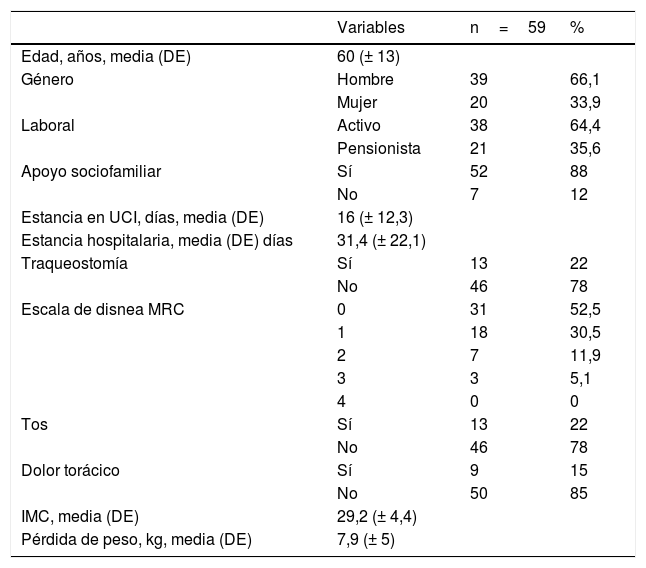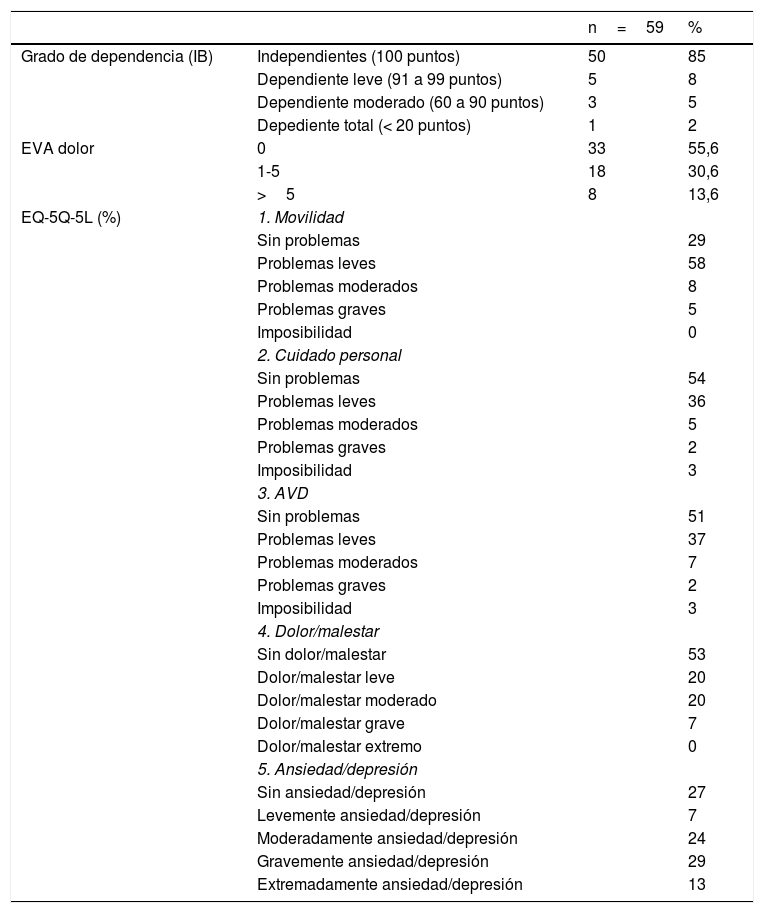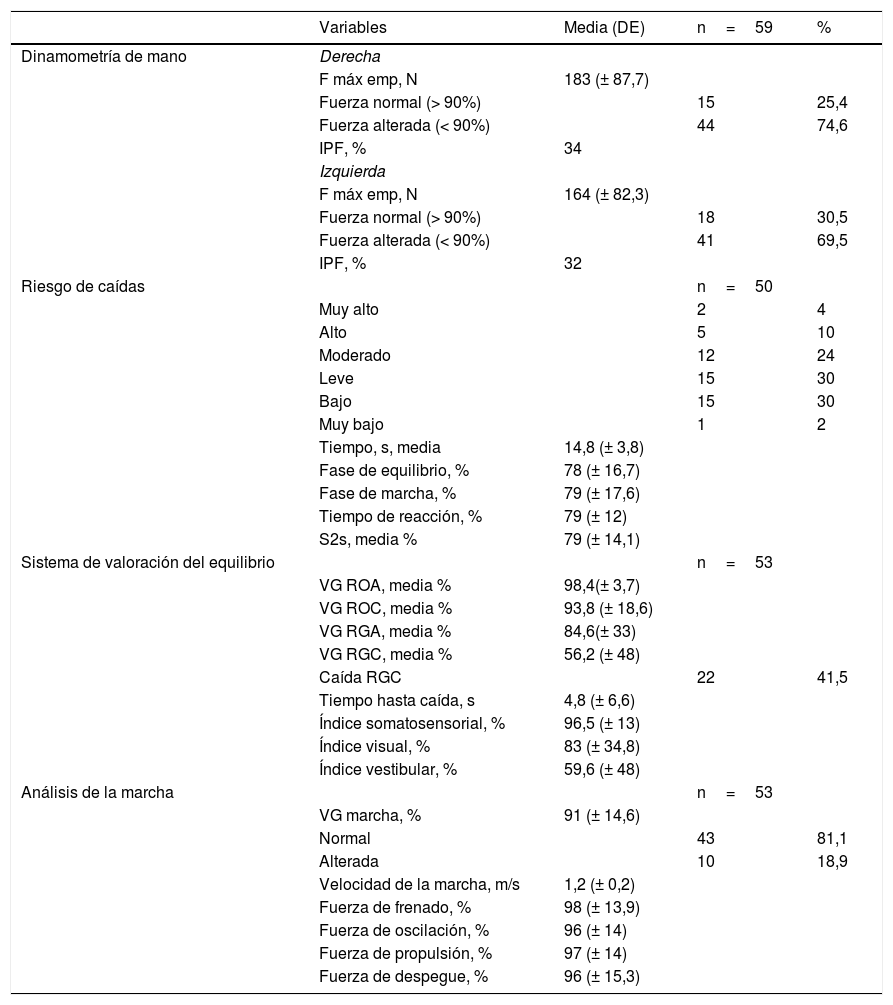Describir mediante un estudio transversal observacional la situación clínica y funcional, al mes del alta hospitalaria, de los pacientes ingresados con COVID-19 en la UCI del hospital entre marzo y diciembre del 2020.
Material y métodosSe estudiaron 59 pacientes mediante distintas escalas clínicas y pruebas de análisis biomecánico (dinamometría de mano, valoración del riesgo de caídas, análisis de la marcha y del equilibrio).
ResultadosAl mes del alta los pacientes referían sintomatología persistente: disnea (47,5%) artromialgias (45%) y tos (22%). En el cuestionario EQ-5D-5L hasta el 73% de los pacientes refirieron niveles de ansiedad o depresión. El 74,6 y el 69,5% presentaban alteración en la fuerza de la mano derecha e izquierda, respectivamente. En el 38% de los pacientes el riesgo de caídas fue de moderado a muy alto. El índice somatosensorial se mantuvo en parámetros normales, mientras que los índices vestibular y, en menor medida, el visual se mostraron alterados. En la marcha, en el 81,4% de pacientes no se objetivaron alteraciones fuera de la normalidad, con una velocidad de marcha media normal.
ConclusionesA corto plazo, tras una infección grave por COVID-19 los pacientes presentan sintomatología persistente, ansiedad/depresión, deterioro del equilibrio con aumento del riesgo de caídas y pérdida de fuerza de empuñamiento en ambas manos.
To describe by an observational cross-sectional study the clinical and functional situation, at one month after hospital discharge, of patients admitted with COVID-19 in the hospital ICU between March and December 2020.
Material and methods59 patients were studied using different clinical scales and biomechanical analysis tests (hand dynamometry, fall risk assessment, gait and balance analysis).
ResultsAt one month after discharge, patients reported persistent symptoms: dyspnea (47.5%), arthromyalgia (45%) and cough (22%). In the EQ-5D-5L questionnaire up to 73% of patients reported levels of anxiety or depression. 74.6% and 69.5% presented alterations in the strength of the right and left hand, respectively. The risk of falls in 38% of patients was moderate to very high. The somatosensory index remained within normal parameters, while the vestibular and, to a lesser extent, the visual indexes were altered. In gait, 81.4% of patients showed no abnormalities outside the normal range, with a normal average walking speed.
ConclusionsIn the short term after severe COVID-19, patients have persistent symptomatology, anxiety/depression, impaired balance with increased risk of falls and loss of grip strength in both hands.









